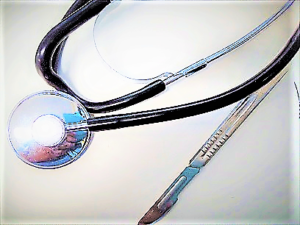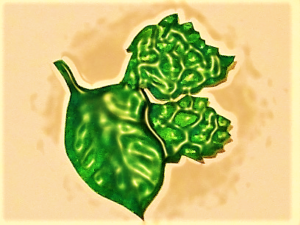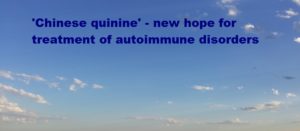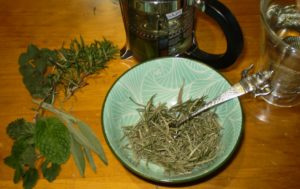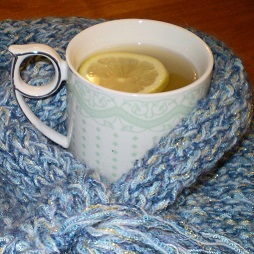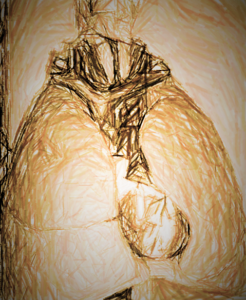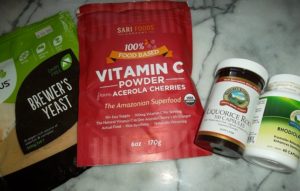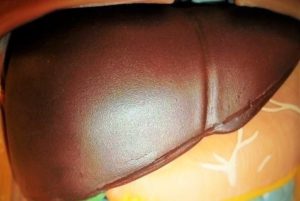
Thyroid dysfunction and how it affects your liver
Thyroid hormone imbalance affects liver structure and function. Thyroid health depends on liver and vice versa. Liver is the largest body organ which has many function. It is a processing, manufacturing, detoxifying and storage plant. Liver relies on thyroid hormones and it is a major user of them. Liver converts about 60% of T4 hormone into active T3 hormone and also plays a role in processing of excessive thyroid hormones. The D1 enzyme which does this conversion is mainly found in the liver and kidneys and is stipulated to determine T4:T3 serum ratio. This enzyme is completely inhibited by the antithyroid drug propylthiouracil (PTU) used in treatment of Grave’s disease. A good liver function is important for thyroid health. Thyroid hormone binding proteins have to be produced optimally in the liver as a smaller reservoir of bound T4 may result in greater fluctuations in the thyroid hormone levels.
Everything we absorb in our intestines is first delivered to liver via portal vein to be processed. Toxic molecules are processed into less harmful forms and go back to intestines through bile duct or through blood to be excreted in urine. Unhealthy gut will affect liver negatively. For example if you have microbial imbalance in your gut, you will have lots more toxic metabolites from these ‘bad microorganisms’. Regular bowl movement is also important for detoxifying the body. Thyroid hormonal imbalance affects the liver negatively as it does many organs in the body and as everything is connected, the burden on each organ increases. Liver may also struggle to detoxify the body, especially in any illness, when the load of toxic molecules increases.
Liver function tests to determine liver health:
Alkaline phosphatase (ALP)
Alanine transaminase (ATP)
Aspartate aminotransferase (AST)
Blood bilirubin
Liver detoxification profile, which measures how caffeine, paracetamol and aspirin are excreted from the body in saliva (usually ordered by integrative medical doctors).
Others: albumin, total protein, gamma-glutamyl transferase (GGT), lactate dehydrogenase, and prothrombin time.
Hypothyroidism and liver
Low T3 levels = sluggish liver= many negative health effects. Some people with hypothyroidism may have liver problems over time. Hypothyroidism can cause liver disease like symptoms. The symptoms connected to a poor liver function can be sore muscles, fatigue, muscle cramps, dull right-upper-quadrant abdominal discomfort. Other symptoms may include abdominal swelling, fluid retention, raised blood pressure, irritation and allergies. Sometimes there are no liver related symptoms at all until the liver disease progresses.
Liver function tests results commonly seen in hypothyroidism
Liver injuries or biochemical test abnormalities can be seen in hypothyroidism.
Decreased levels of alkaline phosphatase ALP test (enzyme in liver) usually due to lack of specific nutrients connected with hypothyroidism
Elevated aspartate aminotransferase (AST)
Elevated alanine transaminase (ALT) – less so than AST (commonly seen with fatty liver disease)
The ALT and AST are enzymes in the liver and the tests measure them in blood. Liver releases them in response to albumin and increased levels are indicative of liver damage.
Bilirubin – (product of breakdown of old red blood cells) may be reduced due to reduced bile flow and a reduced activity of an enzyme which directs bilirubin excretion. This can be rarely associated with cholestatic jaundice (symptoms are Itchiness, jaundice, pale stool and dark urine).
Biological changes and symptoms of hypothyroidism and liver connection
- Lipid metabolism is affected, higher total cholesterol levels seen and other lipids like LDL and triglycerides.
- Metabolism of cholesterol into bile salts lowered and consequently fat is not properly digested. Fat soluble vitamins (A, K, D and E) and the essential fatty acids are not properly absorbed.
- Problems with detoxifying hormones such as excessive oestrogens and other toxic molecules which may increase the risk of cancer and increases inflammation in the body
- Poor sugar control. Hypothyroid people store less glucose in the liver as glycogen and are more prone to hypoglycaemia and insulin resistance (see my previous blog). Insulin growth factor (similar to insulin and secreted by liver) is reduced.
- Not efficient production of copper binding proteins in liver causing metabolic syndrome problems (obesity, oestrogen dominance, insulin resistance)
- The liver plays a part in maintaining normal iron levels and when it is sluggish due to hypothyroidism, levels of iron become low. Dark circles under the eyes and tiredness may indicate low iron levels in the body.
- Non- alcoholic ‘Fatty liver’ (not necessary in an overweight person or person who drinks alcohol) represented by a reduced hepatic clearance and elevations in the amino transaminases. It is seen as build-up of fat and scarring in the liver. Nutrients such as choline, inositol, SAMe and betaine may help with fatty liver. Fatty liver may progress to liver scarring, damage and liver cirrhosis. There is a correlation of non- alcoholic liver disease and hypothyroidism, it was seen in 26 – 36% of patients with hypothyroidism in a study (5).
- Production of SAMe is reduced in liver which is linked to depression, high histamine (lots of allergies), insulin resistance, lowered glutathione levels and poor detoxification in liver, especially of excessive oestrogen.
- Hyperammonaemia (increased ammonia load) can be seen in severe untreated hypothyroidism as liver changes ammonia (a toxic by-product of protein metabolism) into urea, which is then excreted in urine.
- Poor detoxification of toxic molecules resulting in muscle pain, headaches, migraines and feeling tired
Detoxification processes in liver and hypothyroidism
Phase one of liver detoxification may be low with hypothyroidism, that is toxic substances in the body will not be properly processed into less toxic, more water soluble molecules so that they can be farther processed in phase II. The liver processes metabolic body products (such as body steroid hormones), microorganisms, contaminants, insecticides, pesticides, food additives, medications, heavy metals and other toxins in the 1st phase. If the phase I is low, the body will have a higher toxic load, one can feel unwell, sluggish, tired, itchy, have allergies, headaches, migraines, etc. Cytochrome P450 enzymes are involved in this phase of detoxification and they do not work properly if you have a low thyroid or iron deficiency (these commonly co-exist). Also, if you are sensitive to coffee for example and it keeps you awake and hyper, your phase I of detoxification might not be working properly.
Phase II will be affected as a consequence of poorly functioning phase I and hypothyroidism, especially glycination (vitamin B2 and magnesium are important for glycination) which can make a person less tolerant to aspirin, nuts and preservatives such as benzoic acid. Phase II is sluggish if one has a low protein diet. Alkaline diet may also help (lots of vegetables). Bone broth with lots of vegetables may provide lots of glycine. Glycine is found in many meats with highest content in gelatins. Having meat and broth from pigs or chicken feet /drumsticks contains high amounts of glycine.
One indicator of sluggish phase II might be strong smell of urine after eating asparagus.
Remedy for improving your liver detoxification: optimal hormonal replacement (hormonal replacement with levothyroxine- T4 only may is not be optimal for many people), avoidance of toxins, alcohol and remedies to keep the gut and liver healthy.
Remedies: Apart from optimal hormonal replacement and good anti-inflammatory diet, B vitamins (including vitamin B12), natural vitamin C, glutathione (and precursors- selenium, vitamin E, glycine, glutamine and cysteine) and magnesium may help. Since absorption of all vitamins and minerals is lowered with hypothyroidism, this also have an impact on detoxification processes. Improving stomach acid and home remedies such as apple cider vinegar might help. Cruciferous vegetables, bitter vegetables (mustard greens), Swedish bitters, red beets and green tea may also be beneficial. Also, if you are low in iron (also common with thyroid conditions), the detoxification will not work properly. Phase I of detoxification is inhibited by grapefruit juice so if your detoxification is low in phase I, as commonly seen with hypothyroidism, grapefruit juice is not recommended (but oranges and lemons are fine). Grapefruit juice is only recommended for people whose phase I is too fast (like in people who are sensitive to chemicals). Phase I and II work together and need to be optimal and in balance.
Healthy, anti-inflammatory diet is important for people with thyroid autoimmunity. It might be important to avoid toxins and certain medications as well as alcohol. There are products on the market, which integrative doctors can prescribe for the improvement of liver detoxification phases, such as P2 Detox powders. However they only are prescribed if liver struggles with optimal thyroid function due to other reasons other than thyroid problems.
Let’s examine the other spectrum of thyroid dysfunction-hyperthyroidism:
Liver and Hyperthyroidism
Some liver injury is relatively common with hyperthyroidism. Untreated hyperthyroidism can lead to fatty change to cirrhosis of liver (scarred and enlarged) and in few cases even liver failure. Excessive T3 can cause death of liver cells. People with untreated Graves’ disease may have heart problems due to congested liver.
The problem with Graves’ disease and hyperthyroidism is that the antithyroid medications can be toxic to the liver. Sometimes jaundice may result as a consequence of antithyroid medications and there might be some mild liver injury due to the antithyroid therapy. This is especially important for children. PTU is mainly known for its possible higher toxicity to liver as in about 30% liver enzymes are elevated with PTU-(15). Rarely, PTU has been associated with a severe liver disease and liver failure. The signs of a liver toxicity can be: loss of the appetite, severe fatigue, urine turning dark and brown, pale stools, yellowing of skin and eyes (jaundice), abdominal pain, nausea and general itching. Contact your doctor immediately if you have any negative symptoms with antithyroid meds as early identification of clinical signs of liver troubles is important. Medication is discontinued if liver function is affected and liver health monitored.
Regular liver functions should be done while on antithyroid medications to monitor liver function within 3 months after starting on antithyroid medications, especially important with PTU. Liver function test before starting the therapy would also be beneficial to monitor for changes.
Liver function test commonly seen in hyperthyroidism:
– Elevated levels of alkaline phosphatase (in 64% of cases (14)). Alkaline phosphatases act by splitting off phosphorus (an acidic mineral) from many molecules to try to create an alkaline (basic) pH in the body. An increased level of alkaline phosphatase may be due to hyperthyroidism, and decreased level to hypothyroidism.
-Increase in the enzymes-aspartate aminotransferase (AST) and alanine aminotransferase (ALT) levels (in about 27- 37% 0f cases) (13). They are markers of liver health, may be elevated during antithyroid medication therapy, also indicate thyroid dysfunction as thyroid hormones modulate liver function.
-Elevated bilirubin (due to the thyroid hormone effects on liver) -jaundice can be seen due secretion of bilirubin
– Elevation of γ‐glutamyl transpeptidase GGT, gamma-GT (elevated levels are seen in liver injury)
-A low cholesterol level is seen in hyperthyroidism. It is related to changes in the expression of certain genes and regulation of certain cell receptors. Cholesterol is needed for making many hormones (such as progesterone, cortisol), formation of vitamin D, formation and health of cell membranes and production of bile salts. Thus low cholesterol leads to many health problems.
– Iron levels become abnormal due to changes in liver functioning.
-Abnormal sugar control due to increased release of glucose form liver and other thyroid hormone effects on hormones and pancreas function
-The by-products of protein breakdown are toxic (such as ammonia) and need to be detoxified by liver which can become overwhelmed. They increase in blood and urine, causing headaches and nausea.
Detoxification process in liver is impaired due to hyperthyroidism and increased toxic load in the body.
Things which may help: healthy, organic food. Fish is high in methionine which is needed for detoxification of excessive thyroid hormones in the liver. L-carnitine, known as acetyl-L-carnitine or carnitine, is synthesised in the liver, kidney, and brain and actively transported to other areas of the body. In order for carnitine to be made in the body, essential amino acids, such as lysine, methionine, vitamins: B3 (niacin), B6 and iron are required. L- carnitine may help with Graves’ disease as shown in some studies. Glutathione is synthesised in many parts of the body but the main side of production is in the liver. It is a molecule consisting of three amino acids: L-cysteine, L-glutamic acid and glycine. Boosting natural N-Acetyl-Cysteine (NAC) levels might be helpful for people with autoimmune disorders as it believed to be a rate limiting amino acids for the formation of glutathione. Curcumin, an active ingredient of the Indian spice turmeric might help as it is anti-inflammatory and helps with detoxification process in liver. However how curcumin works in individuals with GD may vary depending on cytokine profile of an individual. Chlorophyll, the green pigment in plants contains high amounts of magnesium. Having green drinks every day can detoxify the liver and provide this mineral. Magnesium is also available in oil and gel forms that can be put on skin. Vitamin C helps to displace toxic halogens from the body in place of iodine. It also has positive effects on liver detoxification. It works in synergy with copper mineral. Vitamins B help with detoxification of the liver. Brewer’s or nutritional yeast has glutathione building nutrients. Beet juice is a great liver detoxifier; it also helps to remove bad form of estrogen from the liver and oxygenates the blood. Beets are important as they provide body with lots of methyl groups. Cruciferous vegetables help in many detoxification processes in the liver and are very important for glutathione function and removal of many toxins from the body, including heavy metals. Sulfation is the main pathway, which detoxifies steroid hormones, thyroid hormones, neurotransmitters, paracetamol, xenobiotics and phenolic molecules. Nutrients, which are needed for this step, are cysteine, methionine, molybdenum, glycine and taurine. Taurine is found in meats, seafood and eggs. Turkey meat is very high in cysteine. The process of sulfation can be increased by increasing sulfur containing foods (onion, garlic). Those foods contain sulfur amino acids, such as cysteine. After the final phase of detoxification, the molecules are released in urine, stool and sweat. Infra-red sauna may assist in releasing those molecules from the body as well as a good hydration and enough fibre in the diet. Dandelion root tea might also benefit the liver. Milk thistle is another beneficial herb but some people with Graves’ disease might be sensitive to milk thistle.
Link of thyroid autoimmunity with autoimmune liver diseases
There is a rare association between thyroid autoimmunity and liver autoimmunity such as primary biliary cirrhosis (PBC) as a part of autoimmune polyglandular syndrome and it is due to common genetic factors with the presence of high titre of antinuclear antibody (ANA) and presence of anti-mitochondrial antibodies (AMA). Hashimoto’s thyroiditis is more frequently associated with PBC than Grave’s disease. A case study reported association of Hashimoto’s thyroiditis, primary biliary cirrhosis, and myasthenia gravis (16). However, the most common autoimmune illness associated with PBC is Sjögren’s syndrome.
Please note this blog is for educational purposes only. Consult your health care practitioner regarding any problems and before trying any remedies and supplements mentioned in this blog.
References:
- De Nardo D, Franconi G, Sabino D. [Hyperammonemia during hypothyroidism: an unusual biohumoral finding normalized by hormonal replacement treatment]. Ann Ital Med Int. 11999 Jul-Sep; 14(3):196-201.
- Doron Rimar, MD, Eti Kruzel-Davila, MD, Guy Dori, MD, PhD, Elzbieta Baron, MD and Haim Bitterman, MD. Hyperammonemic Coma—Barking Up the Wrong Tree. J Gen Intern Med. 2007 Apr; 22(4): 549–552.
- Iglesias P, Bayón C, Méndez J, Gancedo PG, Grande C, Diez JJ. Serum insulin-like growth factor type 1, insulin-like growth factor-binding protein-1, and insulin-like growth factor-binding protein-3 concentrations in patients with thyroid dysfunction. Thyroid. 2001 Nov; 11(11):1043-8.
- Miell JP, Taylor AM, Zini M, Maheshwari HG, Ross RJ, Valcavi R.Effects of hypothyroidism and hyperthyroidism on insulin-like growth factors (IGFs) and growth hormone- and IGF-binding proteins. J Clin Endocrinol Metab. 1993 Apr; 76(4):950-5.
- Chung GE, Kim D, Kim W, Yim JY, Park MJ, Kim YJ, Yoon JH, Lee HS. Non-alcoholic fatty liver disease across the spectrum of hypothyroidism. J Hepatol. 2012 Jul; 57(1):150-6.
- Dr.G.Deepika, N.Veeraiah, Dr.P.N.Rao, Dr.D. Nageshwar Reddy. Prevalence of hypothyroidism in Liver Cirrhosis among Indian patients. Journal of Pharmaceutical and Medical Research. 2015 June (3). URL: https://www.woarjournals.org/admin/vol_issue2/upload%20Image/IJPMR031302.pdf
- Huang MJ, Liaw YF. Clinical associations between thyroid and liver diseases. J Gastroenterol Hepatol. 1995 May-Jun; 10(3):344-50.
- R. Malik H. Hodgson. The relationship between the thyroid gland and the liver. QJM: An International Journal of Medicine. 2002 Sep; 95 (9): 559–569.
- Biscoveanu M, Hasinski S. Abnormal results of liver function tests in patients with Graves’ disease. Endocr Pract. 2000 Sep-Oct; 6(5):367-9
- Saro Khemichian, MD and Tse-Ling Fong, Hepatic Dysfunction in Hyperthyroidism. Gastroenterol Hepatol (N Y). 2011 May; 7(5): 337–339.
- Kubota S, Amino N, Matsumoto Y, et al. Serial changes in liver function tests in patients with thyrotoxicosis induced by Graves’ disease and painless thyroiditis. Thyroid. 2008; 18:283–287.
- Baethge BA, Levine SN, Wolf RE. Antibodies to nuclear antigens in Graves’ disease. J Clin Endocrinol Metab. 1988; 66:485–488. 13. Morita S, Arima T, Matsuda M. Prevalence of nonthyroid-specific auto-antibodies in autoimmune thyroid diseases. J Clin Endocrinol Metab. 1995;80:1203–1206. [PubMed]
- Thompson P, Strum D, Boehm T, Wartofsky L. Abnormalities of liver function tests in tyrotoxicosis. Mil Med 1978; 143:548–51.
- Doran GR. Serum enzyme disturbances in thyrotoxicosis and myxoedema. J R Soc Med 1978; 71:189–94.
- Williams KV, Nayak S, Becker D, Reyes J, Burmeister LA. Fifty years of experience with propylthiouracil‐associated hepatotoxicity: what have we learned? J Clin Endocrinol Metab 1997; 82:1727–33.
- Rajaraman S, Deodhar SD, Carey WD, Salanga VD. Hashimoto’s thyroiditis, primary biliary cirrhosis, and myasthenia gravis. Am J Clin Pathol. 1980 Dec; 74(6):831-4
- Toru Shizuma. A Literature Review of Concomitant Primary Biliary Cirrhosis and Graves’ disease. Department of Physiology, School of Medicine, Tokai University, Japan. Journal of Gastrointestinal & Digestive System. URL: https://www.omicsonline.org/open-access/a-literature-review-of-concomitant-primary-biliary-cirrhosis-and-gravesdisease-2161-069X-1000269.php?aid=47593&view=mobile
- Liver phases 1 and 2 detoxification pathways. URL:http://balancedconcepts.net/liver_phases_detox_paths.pdf

